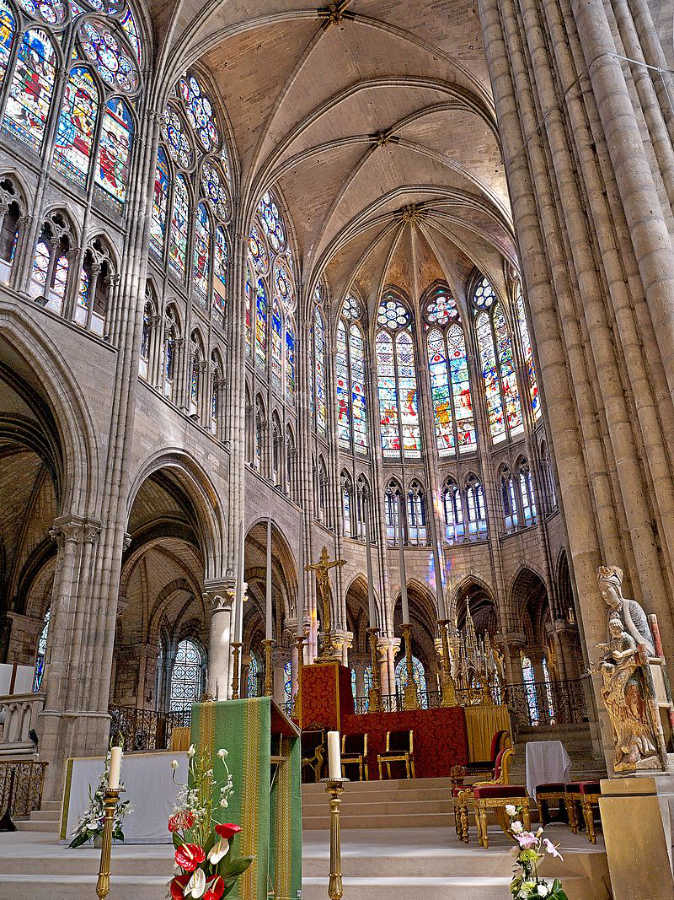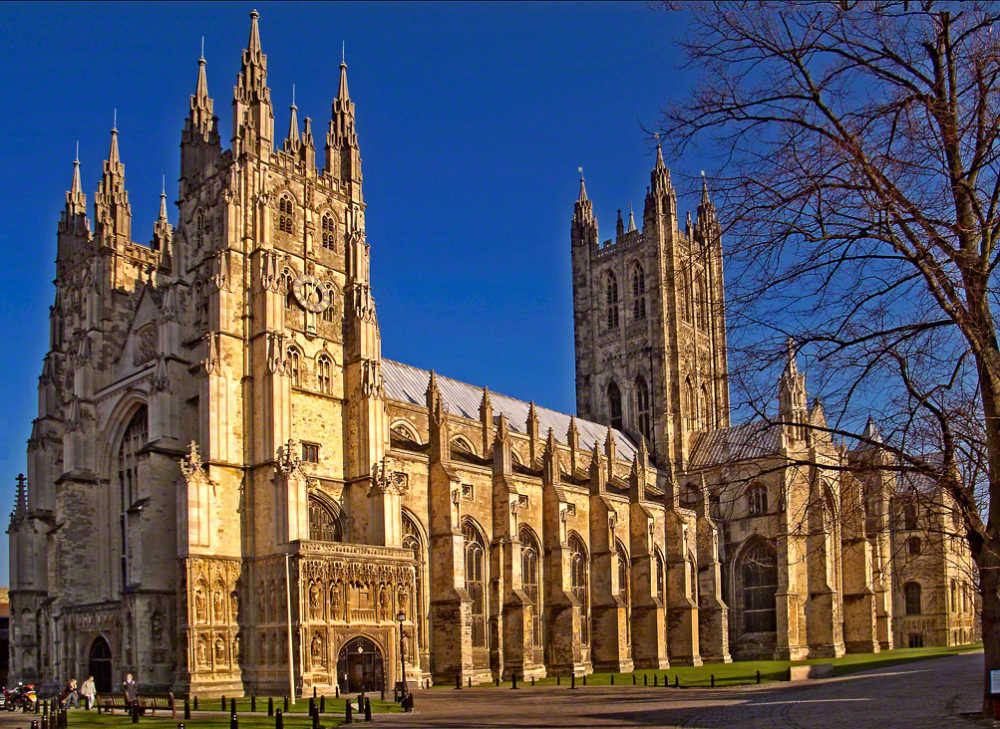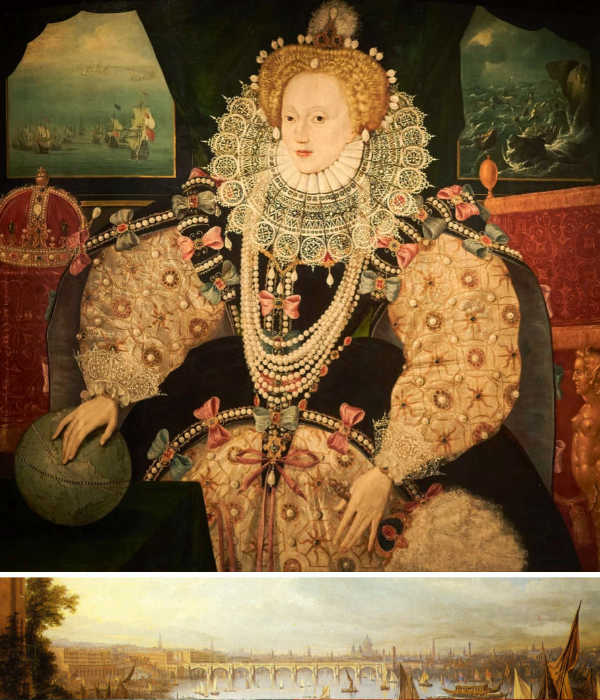Out of the shadows
The twelfth century renaissance

Our books have taught us that Greece once had pre-eminence in chivalry and learning. Then chivalry passed to Rome, together with the highest learning which has now come to France. God grant that it remain here; and that it finds the place so pleasing that it never departs from France. The honour which stops here, God has but lent to the others. Of the Greeks and Romans no more is said; their word is ceased, and their glowing embers extinguished.
Chretien of Troyes, writing in second half of the twelfth century
The moderni had arrived.
The world changes. Sometimes for the better, sometimes for the worse - mostly that will depend on your point of view - but look back even over your lifetime and things are clearly not what they were. That said, it isn’t easy to identify the specific time or place when it all changed. Individually there are big events: people come and go, they’re born and they die. And you notice. When you put all the atoms together into the whole, however, that change is incremental. It is almost imperceptible day to day. Yet the days when you wake up on a world different from the day before are few and far between. That’s one of the reasons why 14 October 1066 is still famous. It is not every day that England’s look and sound, its direction and even how it feels has changed more or less overnight.
If you looked up every so often during the twelfth century, though, you could see, hear and possibly even feel change in the world, or the world of Christendom at least. People did, and started to pick up on it. As Chretien of Troyes spotted with no shortage of satisfaction, this might not just be another harking back to classical antiquity, but steps into Christendom’s own new world.
This was displayed on the grandest scale. Great church buildings - abbeys and cathedrals - started to reach far above the old skylines.
On its own this was not quite new. The end of the eleventh century had seen plenty of development. The Norman rulers of England spent much of their windfall dragging Anglo-Saxon church buildings into what they saw as the modern world in Durham, Winchester and elsewhere. Back in Normandy, William and Matilda’s twin foundations in Caen remain both impressive and graceful in the Norman or Romanesque style. Very soon, though, they were of the past.
In 1144, Abbot Suger presided over the consecration of his new abbey at St Denis. This was the burial place of French kings, but Suger and his master masons had put aside the traditional. The Abbey was the first building completed in what would become known as the Gothic style. Far more than just replacing the Romanesque rounded arches with pointed ones, the new style brought in several innovations aimed at capturing space under huge vaulted ceilings and flooding it with natural light. St Denis topped this off with generous gold decoration that could shine in the sun. Soon, everyone would want one, and work was under way across Christendom to add, upgrade and rebuild in the new style.
In a world where most of the buildings you would come across were single storey and all were dark as they tried to keep out the cold, the sight of something like Canterbury’s new cathedral would have been impressive. To venture into the finished article on a sunny morning, with a riot of colour streaming through the stained glass windows, would risk you thinking that they really had brought a slice of heaven down to earth.
Not everyone took it so well. Bernard of Clairvaux, the figurehead of the new Cistercian movement, denounced Suger’s church specifically:
Oh vanity of vanities, but more folly than vanity! Every part of the church shines, but the poor man is hungry! The church walls are clothed in gold, while the children of the church remain naked… Tell me then, poor monks - if indeed you are poor - what is gold doing in this holy place?
Bernard of Clairvaux, quoted in ed Anthony Coleman, Millennium (1999), the adaptation of Filipe Fernandez-Armesto’s Millennium (1995)
In Suger’s defence, he needed some divine intervention to get St Denis to the finish line. The story has it that his carpenters struggled to find trees big enough to bridge the ceiling of the new church. Troubled by this, Suger himself ventured into the forest and identified twelve that were big enough, ’and we could not find one timber more than we needed.’ St Bernard may have been familiar with the problem, as the Cistercians ventured into the depths of the forest to clear sites for their new abbeys.
Whether Suger’s involvement was true or not, the practical problem of how to build something that size was a very real one. Those at the cutting edge had pushed their craft as far as their materials would allow and wanted to go further. This would mean solving a wide range of problems, either by looking back to the ancients or, in more and more cases, finding something new. It is perhaps no coincidence that, after a bit of a run at it, the Gothic style finally provided the world with a taller building than the Great Pyramid of Giza on the completion of Lincoln Cathedral in 1311.
The twelfth century must have echoed to the sound of builders, as the bonanza was not just driven by the church. The old castles of a motte and wooden bailey were steadily replaced with stone keeps and wall systems. They could go up with lightening speed, as England demonstrated when royal power suddenly ebbed with King Stephen during the 1140s; Henry II had to go to some efforts in the first half of his reign to make sure that they all came down again. And again, while the end of the previous century saw the building of the stone keep of the White Tower in London, the twelfth was to offer masterpieces on the scale of Kerak and Crac des Chevaliers in the Holy Land at mid-century, and Richard I’s Chateau Gaillard, perched three hundred feet above the Seine at century’s end. Impressive again, but in a different way.

All of this took skill, and the twelfth century did not limit itself to practical expertise. Schools and, in time, universities all saw growth as learning was back in vogue. Henry II’s court was thought the most impressive of its day not just for having the finest knights, although Henry no doubt would claim that too, but the finest minds. King Louis VII of France was the patron of masters such as Abelard and Hugh of St Victor. Queen Eleanor, Henry’s wife and Louis’ ex-wife, had a court that in many ways surpassed her husbands’ as a sponsor of music and the liberal arts which developed the idea of courtly love that became so popular throughout the rest of the period. Churchmen were not to be left out. Archbishop Thomas cultivated scholars during his exile, while Henry of Blois, bishop of Winchester and King Stephen’s younger brother, was a patron of artists and known for a lavishly illustrated set of Bibles.
These thinkers were there not just for adornment, but to produce it, through writings, music, art and ideas. In some ways this reflected the personality of their patron - Henry’s court produced practical government thinkers such as Robert fitzNigel, who wrote the Dialogue of the Exchequer, and Ranulf Glannvill with his treatise on English law - but these were mobile men in a cosmopolitain, European mileu. Gerald of Wales’ writings on Ireland and Wales give away plenty about how little he found that he had in common with the locals after a circuit of schools and courts. As all of these thinkers taught, so more and more were drawn into their world and more could in turn be produced.
Just like the master builders, carpenters and masons, these academics started with the traditional and moved to the classical, but began to strain against the confines of both. Latin phrases could only be so well-turned before new words and styles needed to evolve. While some were content to stand on the shoulders of classical giants, others felt that only helped you to see further. They thought themselves the moderni, and it was their turn now.
But what lit the fuse? Why was the future suddenly now?
All of these component parts have one thing in common: they are not cheap. In many cases, as St Bernard pointed out, they are eye-wateringly expensive. Materials need to be found and paid for one way or another. Likewise, all of the people involved need to be fed, watered and given something for their trouble.
To do that, you need to find some money. In the twelfth century this could be in cold hard cash, but feudal renders and other obligations could also be leaned on; land was still the main reward for service. You could either get this from shaking down what you had, or finding new sources of wealth. Most likely, it was a bit of both.
One thing twelfth century Christendom had going for it was the weather, which steadily improved farming conditions as the first half of the century wore on. Farmers’ tools also improve, with iron ploughs entering service, and better collars putting two horses in front of those ploughs rather than slower and more cumbersome oxen. Both of these point to increased productivity and new land coming into production. More food on the table, for one thing, but you only put that kind of effort and investment into new fields when the old ones are producing well if you think that the price will hold up. One trouble with crops is that a good year floods the market and lowers the price, so you can end up selling more for less than than you got last year. With towns swelling beyond old walls, not only new monks and nuns but whole new orders springing up, and supplies for crusading expeditions, it is easy to think a landholder would have thought it well worth the effort.
Growing towns usually means a good time for trade. It is easy to underestimate the strength of trade in the middle ages, but it is a fair guess to say that people don’t spend much longer than they have to making things nobody wants, or trying to sell things nobody can buy. Longer distance trade also picked up a boost from the Crusader States that sprang up out of the First Crusade, as goods flowed in both directions as well as developing more ready markets along the main routes. At a less sophisticated level, there were many who have done well out of crusading whose earthly reward was found in cash and treasure.
All of these options - crafts, trades, towns, monasteries, learning and crusading - provided a market as well as an outlet. England had established a clear bias towards eldest sons, but other lands had seen patrimonies - family lands - split ever more down the generations. Other options for younger sons to make their way in the world would have helped keep lands together and, importantly more viable. It reduced the risk of family squabbles destroying the very assets each wanted for themselves.
While this was true of the baronage - the wider aristocratic class - it was true of others too. As often happens when the economy turns up, there was an outbreak of social mobility. Walter Map’s response to newcomers was also in the time honoured tradition:
[the aristocracy were] too proud or lazy to put their children to learning. [The rustics] vie with each other in bringing up their ignoble and degenerate offspring to the liberal arts.
Walter Map; De Nugis Curialum (The Trifles of Courtiers), second half of the C12th
Anything that helped peace helped prosperity. The scale of destruction that armed raiders could do in just a few hours could take years to repair and replace. William the Conqueror’s Harrying of the North set the whole region back a generation at least. This was not a society which could ever be truly peaceful - war was too ingrained a fact of life - but increased local peace, burgeoning ideals of chivalry and knightly responsibility, the structured war of jousting and the tournament, and the opportunity to practice your violence on the infidel in the Holy Land all helped take the edge off day-to-day life. And while barons, kings and their families could and did still fight, the emergence of larger powers through Henry II’s empire in France, a stronger role for the French king, and a powerful Holy Roman Empire created a clear hierarchy compared to eleventh century contests between the dukes and counts of Normandy, Brittany, Flanders, Blois and more. Particular as you went further north through France, you were at more risk from feuding between Henry and his sons or with the king of France, than lower level local disruption.
As courts had expanded, so did this competition between the great and the good. Chretien of Troyes claimed that the French had seized the baton from the Greeks and Romans. The Holy Roman Emperors no doubt felt that it was their inheritance, and that their title held an important clue. The Byzantine Emperors, ruling over what was once the Eastern Roman Empire itself, might with good reason think that nothing had gone away in the first place. But by the time Henry II’s reign was into its stride it was a case of keeping up with the Plantagenets. His English administration, Queen Eleanor’s troubadour court in Aquitaine, and the superstar status on the tournament circuit of his son, Henry the Young King and knights such as William the Marshal made sure of that.
But if cash was more plentiful, so were the ways that you could spend it. Kings worked long and hard to pull in everything that was their due and, at a time when more wealth was appearing amongst a lesser gentry, their loyalty and most importantly a share of their revenue was critical. Barons and senior churchmen needed and wanted to keep up with the trappings and lifestyle of their status; they wanted to tap these sources of income too.
These claims regularly overlapped, but that was no novelty. Write the results down, though, and the decision lasts. Precedent can be terrific or a dangerous thing, depending on which side of the outcome you are. Relations between barons and kings remained highly personal, but perhaps not quite as personal as they once were. What you gave up one day you, your peers or your children may not be able to recover the next. These things always mattered. Perhaps now they were starting to matter just that little bit more.
Bibliography
- Clanchy, M.T. (1983) England and its Rulers. London, Fontana
- Warren, W.L. (2000) Henry II. London, Yale
- Walter Map (late twelfth century) De Nugis Curialis
- Nicholas of Guildford (twelfth or thirteenth century) The Owl and the Nightingale

